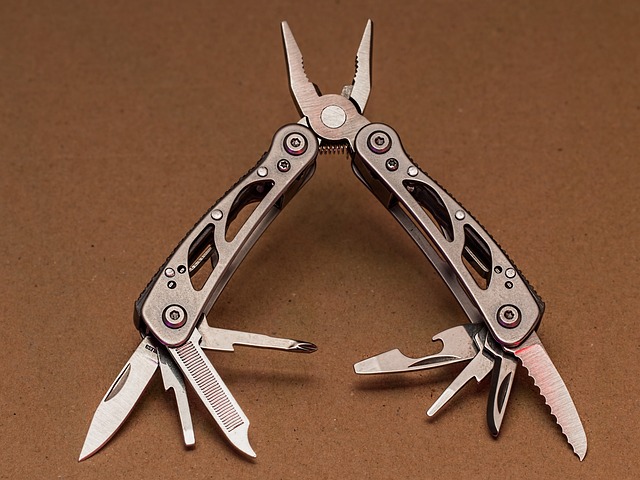When procuring a flashlight for hunting and survival at dusk, prioritize high-lumen output, durability, versatile modes, robust construction, and environmental resilience. The best models are made from aircraft-grade aluminum or similar materials, ensuring longevity and protection against falls and harsh conditions. A high-intensity LED delivers a focused beam for long-range visibility, while different brightness settings help manage battery life during extended use. For those venturing into remote areas or facing unpredictable weather, waterproof and impact-resistant flashlights are essential for consistent performance in all conditions. These specialized hunting and survival flashlights also emit light within the green spectrum, optimizing for the human eye's peak sensitivity at dusk and minimizing animal disturbance. They offer various modes, including red or green lights that enhance visibility without compromising natural scotopic vision. In summary, Flashlights For Hunting And Survival Situations are indispensable tools, combining high lumen output, durability, beam versatility, energy efficiency, and environmental resilience to ensure safety and effectiveness in low-light outdoor conditions. Advanced models may include additional features like night vision capabilities, digital recording options, sensors for detecting animal movements, and GPS technology for mapping and navigation. These enhancements allow for precise and stealthy observation of animal behavior during dusk hours, making them invaluable for hunters and researchers alike.
When twilight descends and daylight wanes, discerning animal activity becomes a delicate task for hunters and wildlife enthusiasts alike. The article at hand illuminates the pivotal role of flashlights in tracking animals during this challenging time. We delve into the essential features of hunting flashlights that enhance visibility without disrupting natural behavior patterns. Explore the intersection of human vision, light spectrums, and dusk’s complex lighting conditions to understand how the right flashlight can make a significant difference in your observations and hunting success. From types of flashlights best suited for dusk tracking to ethical considerations and technological advancements, this guide equips you with comprehensive strategies to maximize your experience while respecting wildlife. Whether for survival or sport, “Flashlights For Hunting And Survival Situations” is an indispensable resource for those seeking clarity in the dimming light of dusk.
- Understanding the Role of Flashlights in Animal Tracking at Dusk
- Key Features to Look for in a High-Quality Hunting Flashlight
- The Science Behind Human Vision and Lighting Conditions at Dusk
- Types of Flashlights Ideal for Dusk Animal Tracking
- Strategies for Using Flashlights Effectively During Twilight Hours
- Best Practices for Ethical Wildlife Observation with Artificial Lighting
- Battery Life and Lumens: What to Consider When Selecting a Hunting Flashlight
- Advanced Technologies in Flashlights for Enhanced Animal Tracking at Dusk
Understanding the Role of Flashlights in Animal Tracking at Dusk
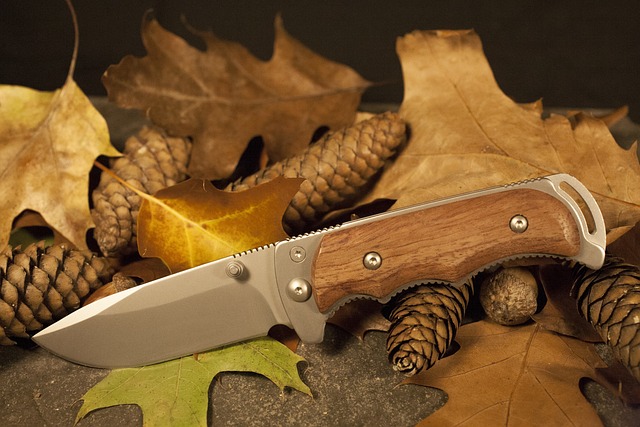
When the sun dips below the horizon, lighting becomes a critical tool for anyone engaged in animal tracking, whether for hunting or survival purposes. Flashlights for hunting and survival situations play a pivotal role during the transition from daylight to darkness, particularly at dusk when visibility significantly diminishes. At this time, animals often become more active, moving to feed or find shelter. A reliable flashlight can illuminate paths, reveal tracks, and highlight details in an environment that would otherwise be shrouded in shadows.
Selecting the right flashlight for tracking animals at dusk is essential for several reasons. The beam intensity should neither be too bright, which could startle or alter animal behavior, nor too dim, where it fails to reveal critical information. Flashlights designed for hunting and survival situations often feature a focused beam that can reach long distances, allowing users to spot animals from afar. Additionally, these flashlights are typically built with durability in mind, capable of withstanding the rigors of outdoor conditions. Their ergonomic design ensures they are easy to handle, even when hands are wet or cold. Furthermore, a dependable flashlight should have a long battery life to avoid unexpected power loss during critical moments. The best models offer adjustable brightness settings, which can be toggled according to the lighting needs at different stages of the dusk period. This adaptability makes them indispensable tools for anyone looking to track and observe animals safely and effectively after nightfall.
Key Features to Look for in a High-Quality Hunting Flashlight
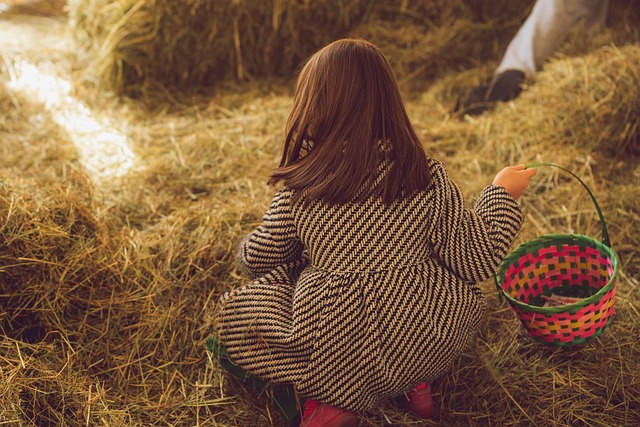
When selecting a flashlight for hunting at dusk, several key features distinguish high-quality models suitable for hunting and survival situations from their less capable counterparts. Firstly, lumen output is paramount; a high-lumen flashlight ensures you can illuminate distant areas effectively, which is crucial for tracking animals that are active during twilight hours. Additionally, a durable design with a robust construction is essential to withstand the rigors of outdoor hunting conditions. Look for flashlights constructed with aircraft-grade aluminum or other high-strength materials, as they can endure drops, impacts, and harsh weather without failing.
Secondly, beam intensity and focusability are significant factors. A concentrated beam allows for long-range identification of game, while a floodlight function provides broader illumination for navigation through dense vegetation or setting up camp. The best flashlights for hunting and survival situations also offer different modes, including high, medium, and low settings, which help manage battery life, especially during extended hunts. Furthermore, consider a flashlight with a long-lasting rechargeable battery or one that accepts AA or AAA batteries, ensuring you have power when you need it most. Lastly, features such as waterproofing and impact resistance are non-negotiable for field use, guaranteeing your flashlight remains operational in all conditions. With these characteristics in mind, a high-quality hunting flashlight will not only enhance your visibility during dusk but also serve as an indispensable tool for survival in unexpected situations.
The Science Behind Human Vision and Lighting Conditions at Dusk
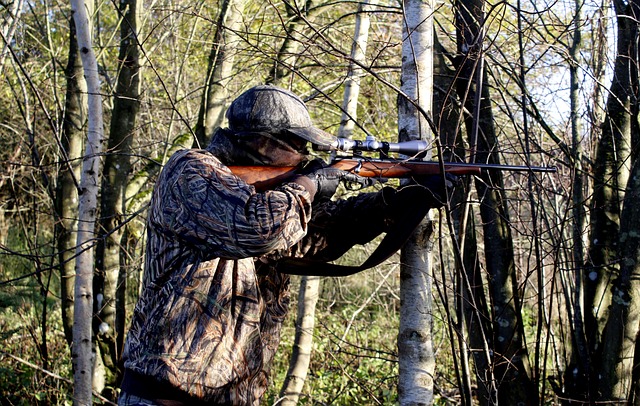
Human vision, a complex interplay of biology and perception, is particularly sensitive to light conditions that prevail at dusk. As daylight fades into darkness, our eyes transition from the bright world of photopic vision, dominated by cones which are more sensitive to color, to scotopic vision, where rods, better suited for low-light environments, take over. This shift affects how we perceive colors and objects, necessitating adaptable lighting solutions such as flashlights designed for hunting and survival situations.
At dusk, the spectral sensitivity of the human eye shifts towards a peak in the green portion of the spectrum. This change means that any artificial light source used during this time must emit light within this optimal range to be effective. Flashlights for hunting and survival situations are engineered with this in mind. They often feature high-intensity LEDs, providing a balanced beam that maximizes visibility while minimizing glare and disturbance to game animals. The lighting conditions at dusk also require a beam that is both focused and broad enough to reveal the subtle movements of animals against the dimming background of the natural environment. These flashlights are typically equipped with various modes, including red or green light options, which further enhance their utility for low-light hunting, as these colors do not distort the natural scotopic vision condition and are less likely to spook wildlife.
Types of Flashlights Ideal for Dusk Animal Tracking
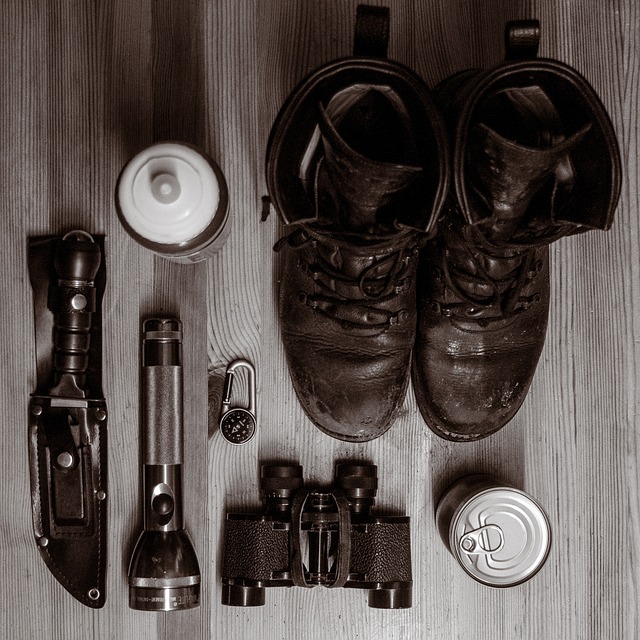
When tracking animals during the twilight hours of dusk, a reliable flashlight becomes an indispensable tool for any hunter or survivalist. The transition from daylight to darkness demands a light source that can penetrate the dimming light effectively. Flashlights designed for hunting and survival situations are engineered with this specific need in mind. They often feature high-intensity LED bulbs that provide a bright, focused beam to illuminate distant or obscured wildlife. These flashlights are typically rugged and waterproof, ensuring they can endure the harsh conditions often encountered in outdoor environments.
Selecting the ideal flashlight for dusk animal tracking involves considering several factors: luminosity, battery life, beam distance, and durability. High-lumen models are preferable as they cast a more powerful light, which is crucial for spotting animals at a greater range. A longer battery life is also significant to avoid sudden darkness when you most need the light. Additionally, the best flashlights for hunting and survival in dusk conditions will have a focused beam with a floating lens system to maintain clarity, even if the device is bumped or jostled. A practical choice might be a tactical flashlight, as it often comes with additional features such as multiple brightness settings, allowing for a broader range of uses from long-range spotting to up-close tasks without blinding yourself.
Strategies for Using Flashlights Effectively During Twilight Hours
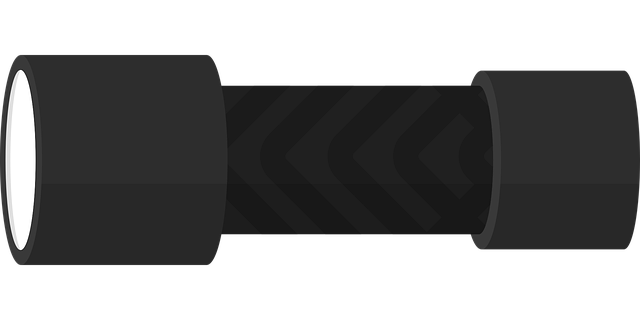
When tracking animals at dusk, flashlights for hunting and survival situations become invaluable tools. The twilight hours pose unique challenges; the fading light can distort colors and obscure details, making it difficult to identify game or navigate through terrain. To effectively use flashlights during these times, one must consider the type of beam produced by the flashlight. A focused spot beam is ideal for scanning long distances and illuminating distant targets, while a flood beam offers a wider area of light that’s beneficial when moving through dense vegetation or underbrush. The balance between beam types often dictates the success of nocturnal tracking.
Selecting the right flashlight with adjustable settings can significantly enhance your experience. For instance, a high-lumen model can cut through the gloom for long-range viewing, while dimming the light conserves battery life for those extended searches. Additionally, consider flashlights that feature red or green LED options. These colors are less likely to startle nocturnal animals and can preserve your night vision. Always ensure that your flashlight is equipped with a reliable, durable battery or power source, as power interruptions during tracking can be detrimental. Furthermore, practice handling your flashlight to minimize glare and shadow, which can reveal your position to the wildlife you’re observing. With careful selection and strategic use of flashlights for hunting and survival situations, you can maximize your effectiveness in tracking animals during the challenging twilight hours.
Best Practices for Ethical Wildlife Observation with Artificial Lighting

Battery Life and Lumens: What to Consider When Selecting a Hunting Flashlight
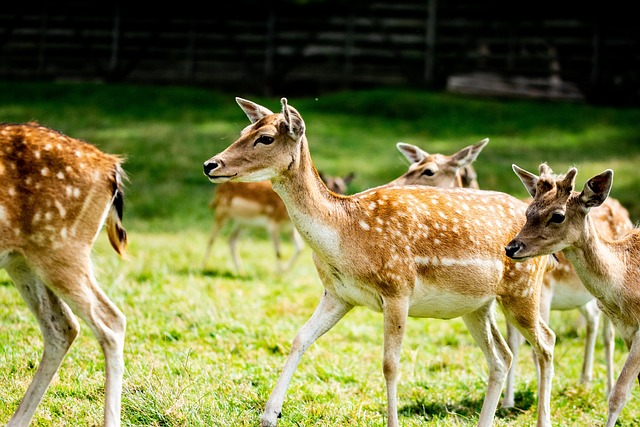
When venturing into the field for hunting at dusk, selecting a flashlight that is both reliable and effective is paramount. Battery life and lumens are two critical factors to consider when choosing a flashlight for hunting and survival situations. A flashlight with high lumen output ensures that you have a bright, focused beam necessary for tracking animals in low-light conditions. However, it’s essential to balance high lumens with practical battery life; a high-lumen flashlight can consume batteries quickly. For extended hunts or unpredictable survival scenarios, a rechargeable battery or a flashlight powered by the latest lithium technologies could be your best bet. These offer longer run times without sacrificing brightness, providing a consistent light source when you need it most. Additionally, consider flashlights with adjustable brightness settings to conserve power during moments of lower light requirements and maximize visibility when needed. Flashlights For Hunting And Survival Situations should be designed with durability in mind, offering robust construction to withstand the rigors of outdoor use. Investing in a high-quality flashlight with optimal lumen output and efficient battery usage will enhance your safety, improve your tracking capabilities at dusk, and ensure you’re prepared for any eventuality in the field.
Advanced Technologies in Flashlights for Enhanced Animal Tracking at Dusk
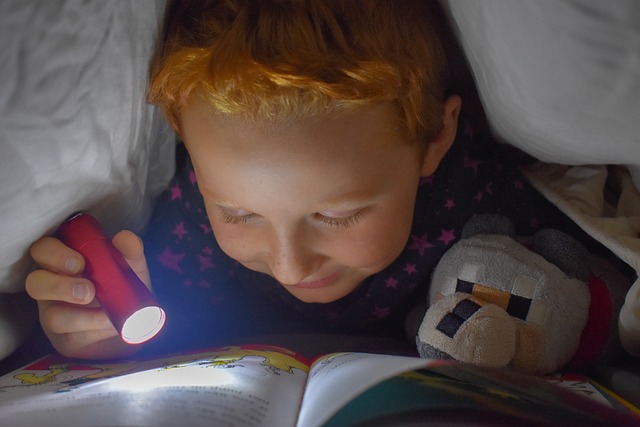
In the realm of animal tracking, especially during the twilight hours of dusk, the integration of advanced technologies in flashlights has significantly enhanced the capabilities of hunters and survivalists. Modern flashlights for hunting and survival situations are equipped with features that go beyond mere illumination. These devices often incorporate high-intensity LEDs capable of producing a bright, focused beam that can penetrate through dense foliage or dimming light conditions. This allows users to spot animals from afar without being detected themselves. Additionally, some models come with infrared capabilities, enabling night vision and the ability to observe wildlife in their natural state, undisturbed by artificial light.
Furthermore, cutting-edge flashlights for hunting and survival situations are now often integrated with digital cameras and sensors that can record or detect animal movements. This technology is particularly useful for researchers and hunters who aim to study or capture animals humanely. The high-resolution imaging and thermal imaging sensors found in these devices can identify warm bodies against a cooler background, making it easier to track animals even when they are concealed. The inclusion of GPS technology further adds value by allowing users to log their tracking routes, share location data with others, and navigate back through the same path. These advancements ensure that users can effectively track and observe animals during dusk, a critical time for understanding their behavior patterns, without compromising on stealth or precision.
When engaging in the delicate practice of tracking animals at dusk, selecting a flashlight that meets the demands of both the task and the environment is paramount. This article has delved into the critical aspects of using flashlights for hunting and survival situations, emphasizing their role in enhancing visibility without compromising the welfare of the wildlife observed. By understanding the science behind human vision at twilight and the features that distinguish a high-quality hunting flashlight, one can navigate the dimming light effectively and responsibly. The discussion has also highlighted the importance of battery life and lumens, ensuring users have a reliable source of illumination for those crucial moments. With advanced technologies now available in flashlights designed specifically for such activities, outdoor enthusiasts and hunters can take their tracking skills to the next level, all while adhering to ethical practices. In conclusion, the right flashlight not only serves as an essential tool for hunting and survival but also as a gateway to a more profound appreciation of nature’s nocturnal spectacle during the transition from day to night.

